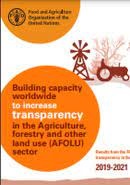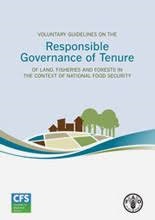The concept of land degradation neutrality (LDN) was introduced into the global dialogue by the United Nations Convention to Combat Desertification (UNCCD), accepted by the international community during the Rio+20 conference in 2012 and adopted as part of the 2030 Agenda for Sustainable Development in 2015.
UNCCD defines it as “a state whereby the amount and quality of land resources necessary to support ecosystem function and services and enhance food security remain stable or increase within specified temporal and spatial scales and ecosystems".
Overview and FAO contribution
LDN aims to preserve the land resource base by ensuring no net loss of healthy and productive land via a combination of measures that avoid, reduce and reverse land degradation. Achieving neutrality requires estimating the likely impacts of land-use and land management decisions, counterbalancing anticipated losses through strategically planned rehabilitation or restoration of degraded land within the same land type. The LDN approach aims to achieve a functional balance between what we take from the land and what we give back, providing a framework for a balanced approach, which considers trade-offs and anticipates new degradation.
The LDN concept and the frameworks to achieve it are still evolving, particularly regarding the neutrality mechanism, which still needs to be widely tested in the field. There are many remaining challenges, particularly related to on the ground implementation and monitoring of progress towards achieving LDN linking different scales contributing to achieve Sustainable Development Goal 15 - Life on Land and its target 15.3
FAO’s contribution to LDN is based on its comparative advantage and expertise in policy development on sustainable land management and addressing land degradation, including governance and land rights, and on its role as the foremost global custodian of agricultural information for the Organization’s country members.
FAO is focusing its efforts on deploying methodological tools and strengthening the capacity of countries to collect data, mainly through FAOSTAT and to use FAO products to analyse such data, including Land Degradation Assessment in Drylands, Global Agro-Ecological Zones, Global Land Cover-Share, Collect Earth, and the statistical resources of the Global Soil Partnership (which FAO hosts).
FAO’s approach can help increase the coherence and harmonization of country reporting to United Nations conventions and standards (for example the UNCCD, the UN Framework Convention on Climate change, the Convention on Biological Diversity, the Intergovernmental Panel on Climate Change, and the System of Environmental-Economic Accounting).
Europe and Central Asia
From the 17 countries in the region, 12 have set and endorsed LDN targets through the working group consultation, of which 9 have also endorsed these targets with an official High-Level Note. Nevertheless, of those member countries in the region that set voluntary LDN targets, many neither have a mechanism for monitoring the implementation and achievement towards LDN nor accurate local data on national relevant LDN indicators (besides the three minimum global ones). In addition, a lack of a regulatory and institutional framework has deteriorated land degradation without proper land management.
National LDN targets and measures should not be designed and implemented in isolation from the nature-based commitments under the bilateral and multilateral treaties and agreements, including National Determined Contributions of the UNFCCC, biodiversity targets of the CBD, Bonn Challenge, and domestic initiatives. When efforts are set up through different intergovernmental processes, they remain institutionally isolated and compete for limited public and private resources.
Restoration commitments in the region are estimated to be between 15.9 and 17.2 million hectares. Most of these commitments have been made in the context of LDN (69 percent to 74 percent).
The countries with the greatest commitments are Turkey, Kazakhstan, Republic of Moldova, Serbia and Uzbekistan. The pledged area under LDN could be considered insufficiently small as the region hosts nearly 155 million hectares of degraded lands.
It is important that LDN commitments meet the standards of ecological restoration. Often, countries favour afforestation measures as an easily deployed and cost-effective measure. Restoration success should not be assessed using only the number of hectares under restoration or trees planted but also with improvements in land-based natural capital and restored ecosystem services.
The learning and knowledge platforms of the UN Decade on Ecosystem Restoration can contribute to fostering national communities of practice and applied research on achieving LDN in the region.
Publications

Land degradation neutrality
2021
Onyango, V., Davies, J., Sharpe, N., Maiga, S.I., Ogali, C., Perez-Rocha, J., Isakov, A.

Links
- Global Soil Partnership
- CACILM - Central Asian Countries Initiative for Land Management
- Desertlinks - University of Sassari
- GLASOD - National soil degradation maps
- Global Mechanism- UNCCD
- UNCCD - United Nations Convention to Combat Desertification
- WOCAT - World Overview of Conservation Approaches and Technologies



